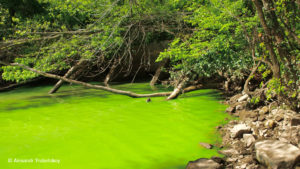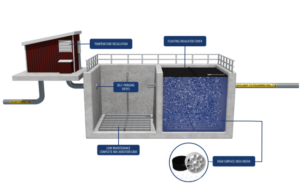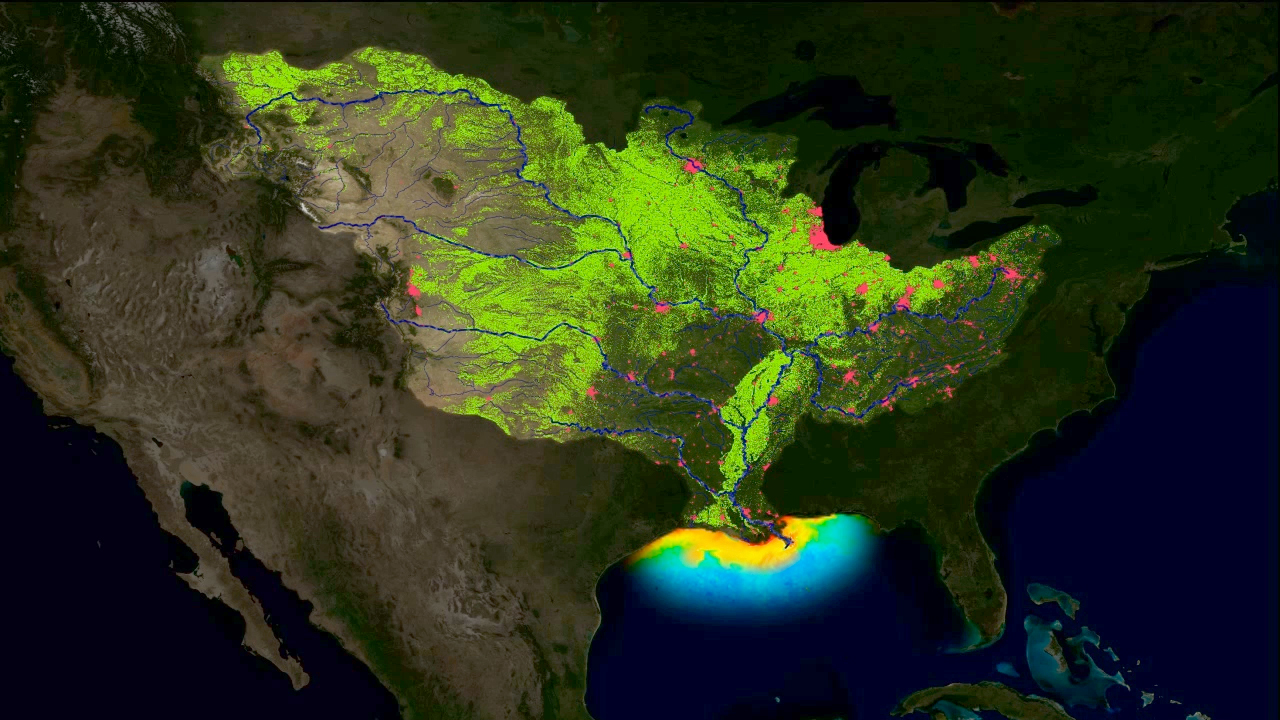
In its effort to protect the health and safety of America’s waterways, the EPA and state environmental agencies have focused on limiting the amount of pollutants that can be discharged into them. In previous articles, we’ve covered pathogens and wastewater lagoon nutrients ammonia and phosphorus; in this article, we’ll discuss Total Maximum Daily Loads (TMDL), including what they are and why they may be of concern to your lagoon system.
What are TMDLs?
As part of the Clean Water Act, the EPA requires states to keep track of impaired waterbodies—those that don’t fully support beneficial uses like drinking water, recreation, agriculture, and aquatic life. States must then calculate the total amount of a pollutant (ammonia, phosphorus, e. coli, toxic chemicals, metals, etc.) each receiving waterway can accept without causing further impairment. The maximum amount of a particular pollutant a waterway can assimilate is called the Total Maximum Daily Load, or TMDL. The TMDL becomes a sort of “budget” that is allocated among all dischargers to that waterbody.
TMDL = WLA + LA + MOS
Where
WLA is point source wasteload allocation, for example wastewater treatment systems;
LA is nonpoint source load allocation, for example agricultural runoff;
and MOS is the margin of safety (aka a little extra just in case).
Point sources are discharges from municipal and industrial wastewater treatment facilities. Nonpoint sources can include stormwater runoff from residential areas, highways, and industrial plants, although the largest contributor is runoff from agriculture.
According to the EPA’s Program Overview: Total Maximum Daily Loads (TMDL), the development of a TMDL for a particular watershed has five steps, to determine:
- Which pollutants are a problem?
- What’s the maximum load of each pollutant the waterbody can handle?
- How much of each pollutant is coming in, and from where?
- How much does the pollutant level need to be reduced?
- How should this lower pollutant load be allocated among all the sources?
The TMDL is submitted to the state’s regional EPA for approval. Once approved by the EPA, the new pollutant limits are implemented through National Pollutant Discharge Elimination System (NPDES) permits and through state-level permits for enforcement.
Each state environmental agency administers its own TMDL program. An impaired waterway may have a separate TMDL for each pollutant, or one TMDL that covers multiple pollutants. A TMDL can cover just one watershed, or may incorporate several. It’s up to the individual states to administer their own pollutant-reduction program.
The TL;DR of TMDL
TL;DR is internet shorthand for Too Long, Didn’t Read. Because TMDLs combine government regulations and science, as you can imagine, there’s a lot to read. The main thing you need to know is, if your facility discharges to a waterway that has a TMDL, it has been tagged as impaired or threatened, and your effluent limits are going to tighten up.
Even though the bulk of nitrogen and phosphorus that ends up in waterways is from agricultural runoff, or what the EPA calls nonpoint sources, wastewater lagoons (all treatment plants, really) get lower limits because they know where you are.
How can a lagoon system, which was not designed to meet low effluent levels of wastewater lagoon nutrients like ammonia and phosphorus, meet these new standards without spending millions of dollars on a mechanical plant?
Talk to the Lagoon Experts
Triplepoint’s wastewater lagoon nutrient removal technologies, NitrOx® Ammonia Removal and PhosBox™ Phosphorus Removal, can be incorporated into your existing lagoon process to provide just the treatment you need to stay in permit.
NitrOx Process: Cost-Effective Lagoon Ammonia Compliance
 The NitrOx Reactor was designed to be incorporated into an existing system for the sole purpose of ammonia removal. A typical NitrOx system is added near the end of the treatment process, prior to discharge. Effluent flows through two complete-mix aeration cells that have a dense concentration of nitrifiers allowing for rapid nitrification in a small footprint. The NitrOx system, through controlled thermal regulation, biomass, mixing, and aeration, can nitrify in any weather.
The NitrOx Reactor was designed to be incorporated into an existing system for the sole purpose of ammonia removal. A typical NitrOx system is added near the end of the treatment process, prior to discharge. Effluent flows through two complete-mix aeration cells that have a dense concentration of nitrifiers allowing for rapid nitrification in a small footprint. The NitrOx system, through controlled thermal regulation, biomass, mixing, and aeration, can nitrify in any weather.
The NitrOx System, through controlled thermal regulation, biomass, mixing, and aeration, optimizes conditions for nitrification, even in cold weather. It was designed to be incorporated into an existing system for the sole purpose of ammonia removal, helping to keep capital costs low—at 2/3 the cost of existing nitrification options—and minimize the financial burden of plant upgrades.
Download our NitrOx brochure for more information on cost-effective Lagoon Ammonia Removal.
PhosBox Lagoon Phosphorus Removal
 Triplepoint has considered all the available science in developing its PhosBox lagoon phosphorus removal process, to optimize phosphorus removal while controlling costs.
Triplepoint has considered all the available science in developing its PhosBox lagoon phosphorus removal process, to optimize phosphorus removal while controlling costs.
PhosBox is installed as a final step before the discharge point to maximize the precipitation of phosphorus without interfering with lagoon treatment.
Sensors monitor phosphorus levels and automatically dose the precise amount of metal salts needed for coagulation, mixing them in the influent chamber. The cloth disk filtration system captures the coagulated phosphorus and removes it from the effluent stream to a storage lagoon; the clean water is discharged.
Automated backwash cycles keep the filter media clean; sensors alert you when the low-cost filter media need to be replaced, which can be accomplished in minutes without downtime.
PhosBox allows lagoons to be upgraded to meet low phosphorus effluent limits—as low as 0.07 mg/L—on an existing footprint with minimal capital expense. Because the coagulant addition and backwash cycles are automated, it’s easy to operate and maintain.
For more information about PhosBox lagoon phosphorus removal, download our brochure.

